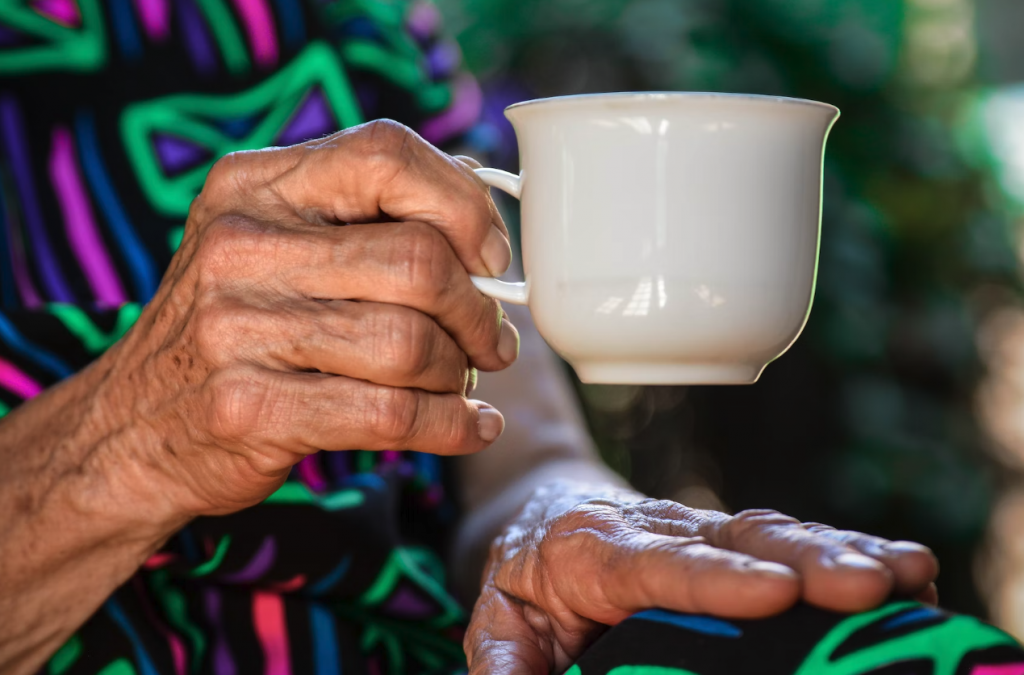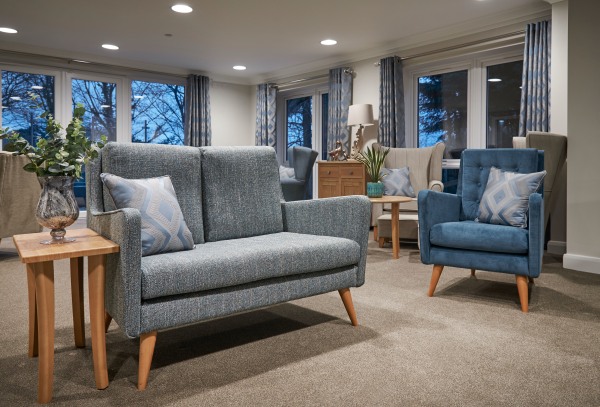Designing Bespoke Care Homes For Dementia Residents
- Bespoke Dementia Care Design: Tailoring care home design to dementia residents involves creating a familiar, homely atmosphere, reducing confusion, and promoting independence while ensuring privacy.
- Wayfinding Solutions: Coordinated colour schemes, clear signage, and easily distinguishable furniture aid residents’ navigation, boosting confidence and self-esteem.
- Foundational Design Principles: Open-plan layouts, natural light, wide corridors, and accessibility are key considerations. Social spaces encourage interaction, while private bedrooms promote individuality and comfort.
- Reminiscence Therapy: Using photos and familiar objects from residents’ past aids memory recall and wayfinding, enhancing overall well-being.
- Safety Features: Design elements like restricted window openings, railings, and easily distinguishable furniture minimize fall risks, prioritizing residents’ safety.
Presently, there are approximately 850,000 people living with dementia in the UK – this figure will reach around 1.4 million by 2040.
This year, 209,600 people will develop dementia – this equates to one person every three minutes. One in six people over the age of 80 have dementia, and 70% of people in care homes suffer from dementia or memory problems.
These saddening statistics are why care homes for dementia residents are so important, and in this article, Aedifice will lay out the key features of a dementia-centric care home.

Designing bespoke care homes for dementia residents
Bespoke dementia care design comes by paying close attention to internal layout, interior design, encouraging independence and maintaining privacy of all residents.
Establishing a familiar, homely feel both in private rooms and public, social spaces is key to this – with navigation between these spaces being equally important.
The building design should aim to reduce confusion and disorientation as much as possible. This can be achieved through both decor and the structure of the care home itself.
The planning stage is also essential. Think: what are the logistical, physical and emotional strains people with dementia face? Then work from there.
Wayfinding within a care home for dementia patients
By sticking to a coordinated colour scheme, and installing a range of visual aids – including clear signage and directional instructions – residents will find it less stressful to navigate the care home on their own.
This helps to improve self esteem and confidence in their surroundings.
Other interior design ideas include bold colour coding for doors – i.e. individual rooms each having their own colour, as would doors leading to different areas of the home.
These would follow the colour scheme for the given area. Furniture should be easily-distinguishable from walls and floors, to ensure residents can find chairs, tables and settees without confusion.
For residents with dementia, consistency and structure are essential.

How to design a building for dementia residents?
Open plan, natural light, wide corridors and a constant focus on accessibility.
These are some of the underpinning design choices we would recommend when designing this kind of care home. Of course, there are many others to think about.
Social spaces which encourage easy interaction, private bedrooms with ensuites and centred on individuality – and an easy-to-follow layout without dead ends or blind spots.
All of these will add up to create a comfortable, safe environment for residents. Carers, too can monitor, interact with and generally care for residents without impeding independence.
Reminiscing the past
It is so important that people with dementia can connect to their past.
However fleeting or few and far between their memories might be, they’re not only crucial to a person’s happiness, but they can also help them find their way around their residence.
Placing photos associated with an era of a resident’s life can help them remember a route through the home – for example, a photo of a scene from the 1940s in the hall on the way to the bathroom can help residents remember that route.
Safe design
Elderly people are more likely to fall, and older people in care homes are three times more likely to fall than an older person in their own home. Care homes can implement design features that can reduce the chances of dangerous falls, including:
- Windows with restricted opening: this eliminates the risk of residents leaning too far out of a window and falling.
- Railings should be installed where possible to give balance and reassurance to residents who are unsteady on their feet.
- Make sure that things like coffee tables and stools are easily distinguishable from the floor – if they blend in, residents are more likely to trip over them and hurt themselves.
With a clear design brief in place – structured around the needs of those with dementia – these specialised needs can be efficiently met.
Our range of services includes project management, chartered building surveys, CDM and quantity surveying among others.
At Aedifice Partnership, we manage new care home construction as well as refurbishment projects throughout the UK. For further details on the services Aedifice Partnership offer, get in contact with us today.



